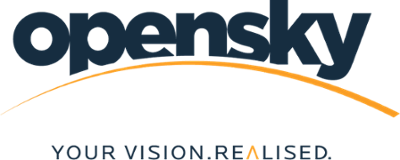Your Million-Euro Project Will Fail — without Benefits Realisation
Large and complicated projects are an inevitable part of any organisation looking to evolve, adapt, and innovate. However, a project or program isn’t necessarily a positive force for business just because it was completed on time, under budget, and as planned; so how do you know that your expensive, time-consuming projects are benefitting your organisation, your processes, and your bottom line?
Benefits realisation is the answer to proving and guaranteeing value in your projects, in the short, medium, and even long term. Let's explore how it does that.

What is Benefits Realisation, and How Does it Work?
Benefits management is the identification, definition, planning, tracking, and fulfilment of the positive outcomes of any given project or program. In short, this management tool ensures that real-world positive outcomes are derived from the work that companies or organisations do to make their work, organisation, or systems better.
OpenSky’s Head of Customer Success, Darren Clark, uses benefits realisation as a vital tool to plan, track, map, and report the tangible benefits of the services and platforms we deliver.
“Benefits realisation is quite simple: it’s about measuring the success of projects based on impacts on the customers business. Many IT projects focus solely on metrics within the project, rather than on the wider benefits the organisation is hoping to achieve as a result of their investment,” he said. “When we undergo this process with our partner organisations, we are aiming to agree what those benefits are and identify points of tangible value as evidence of successful delivery."
How to Use Benefits Realisation in Your Projects in 5 Steps
Benefits realisation distinguishes between these “successful on paper” projects and projects that actually yield tangible organisational benefits by showing a clear link between the goals of a project, the changes implemented, and the real-world benefits and improvements that result. It’s a holistic process that outlines and understand the project success criteria, objectives, and requirements, and examines the outcomes of that project in terms of real-world net gains.
Here are the basic 5 steps to making it work for your projects:
1) Actively reject traditional, surface-deep "success" metrics. A project isn't a success simply because it's under budget or delivered on-time; these should be the basic standards and bare minimums for your projects, like an employee arriving to work on time or submitting work on time.
2) Adapt your KPIs and internal metrics in a before-after analysis of you project. For instance, if your teams submit documents or reports as a critical part of their role (such as timeframes to submit report, total number of reports/docs submitted in a time period) you should draw on these KPIs to measure the impact of your project on that critical employee work.
3) Communicate. Your projects need to consult all affected stakeholders before they're structured and planned, and your teams need to keep talking regularly (no, not once a month) throughout the project lifecycle. As a core part of our approach, we regularly talk to all involved team members and project stakeholders to ensure that we understand all the moving parts of the daily work and are fixing their problems rather than disrupting long-held work and job habits.
4) Learn. No, not just at the end of a project during a debrief. Frequent check-ins with project managers, project staff, and affected users/employees are invaluable to avoid and prevent the "big lessons" you'd otherwise have "learnt" from critical blockers and project failures (like scope or budget creep).
5) Track and assess projects, even when they're long over. A vital part of benefits realisation is understanding that measuring a project's success doesn't end on the date of delivery/implementation. You need to actively measure and track the outcomes of your project for at least a few months after your new software/system is online; it's critical for determining the long-term effects of a project, with an added bonus of being able to justify and demonstrate grounds for future projects based on previous long-term ROI and positive organisational outcomes.
Use Cases for Benefits Realisation in your Organisation
So, why use benefits realisation? Well, there are many key organisations stresses and failures that make a good benefits realisation process vital.
The reasons for this are varied, but these are the most common:
- Business cases focused only on oversimplified/non-beneficial project goals, such as target savings, time, quality, etc.
- Business cases not actually containing specific benefits at all.
- The business goals of projects are poorly defined.
- Business cases putting too much emphasis on deliverables or capabilities, which on their own do not result in specific benefits.
- A lack of mechanisms or structures being in place to realise or verify tangible project benefits.
According to research into benefits realisation, the need for managing benefits realisation is based on three premises1:
- Benefits do not automatically appear when a project is delivered
- Benefits rarely happen according to plan
- Realising benefits is a continuous process of envisioning results, implementing, checking intermediate results, and dynamically adjusting the path leading from investments to business results.
A wide range of scientific research2 shows that benefits realisation is a profoundly useful strategy for understanding and achieving real-world benefits in organisational projects. Research shows the close association between benefits realisation, project success, and the creation of value for the business, suggesting BRM practices as important contributors to the successful execution of business strategies.
What’s more, implementing a benefits management plan into higher levels of governance allows organisations to increase their ability to define and manage their success criteria, resulting in better top-down management across project portfolios.
Finally, benefits realisation can lead to a heightened awareness of the cultural and personal differences that underscore the perception and framing of “success”. A deeper understanding of these differences can enable a more effective management of project portfolios, especially by organisations managing cross-borders projects, since similar evaluations of success can suggest different meanings.
How We Use Benefits Realisation to Map and Accelerate Positive Outcomes
At OpenSky, benefits realisation is an integral part of how we work with our project partners and clients to ensure that everything we develop, build, and implement results in real-life positive benefits that make work easier, processes simpler, and business better.
Human-centred personal investment
We partner with our clients on a deep and personal level because their success is our success. Benefits realisation only works if its flat, equal process that takes all stakeholders seriously – and we get involved.
Deep exploration of organisational issues
Benefits realisations need a complex and comprehensive understanding of the business and organisations processes its examining. Our approach to benefits realisation relies on an exhaustive consultation process that understands customers, how they work, what issues they’re having, and what the best solution will be.
Detailed tracking of changes and implementations
Benefits realisation needs to track changes resulting from or during a change process. We track what is planned, how it rolls out, and its performance post-implementation to ensure that everything is working as intended.
Recording benefits and real human outcomes
It’s not enough merely to measure what software was build and what platforms are rolled out. Good benefits realisation needs to understand and report the real effects on actual human users.
In conclusion, benefits realisation is a powerful way to know exactly how your expensive, months-long, and demanding projects are having a positive effect on the way your organisation runs. Benefits realisation allows your teams better awareness and planning of your projects, more goal-oriented strategy and work, and long-term project management that drives real, tangible organisational benefits and values over vague or superficial benefits.
For over 2 decades now, OpenSky has used benefits realisation to help our partner organisations realise more than just a great ROI: they get lasting and positive change that makes their work faster, better, and easier.
Want to bring that success to your projects and make a real difference in your teams and workflows? Get in touch and find out how we guarantee positive outcomes for projects of all sizes.
Sources:
1) https://iglcstorage.blob.core.windows.net/papers/attachment-37f9e9de-c70f-41f1-a9db-7ebb59f70551.pdf
2) https://www.sciencedirect.com/science/article/pii/S0263786314000519



